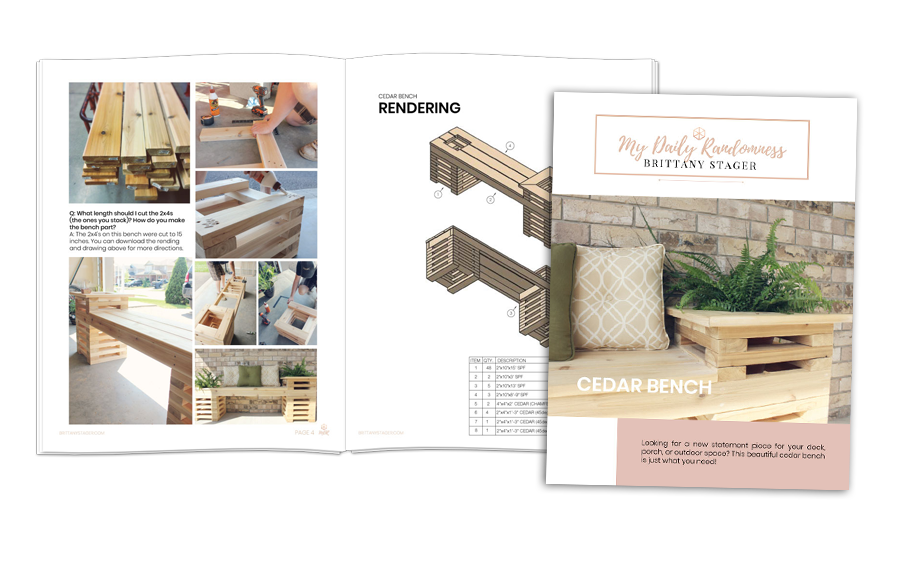Cedar Planter Bench:
Drawing and Rendering
Looking for a new statement piece for your deck, porch, or outdoor space? This beautiful cedar bench is just what you need!
Form and function come together beautifully in this Cedar Planter Bench project. A statement piece for your front porch or backyard patio, this bench offers additional seating while also displaying planters of greenery, flowers, or even herbs.
In this e-book, you will find the plans I used for my personal cedar planter bench.

PURCHASE PLANS
$3.99 USD
what’s included
In The PDF DOWNLOAD YOU WILL RECEIVE:
frequently asked questions
additional posts



